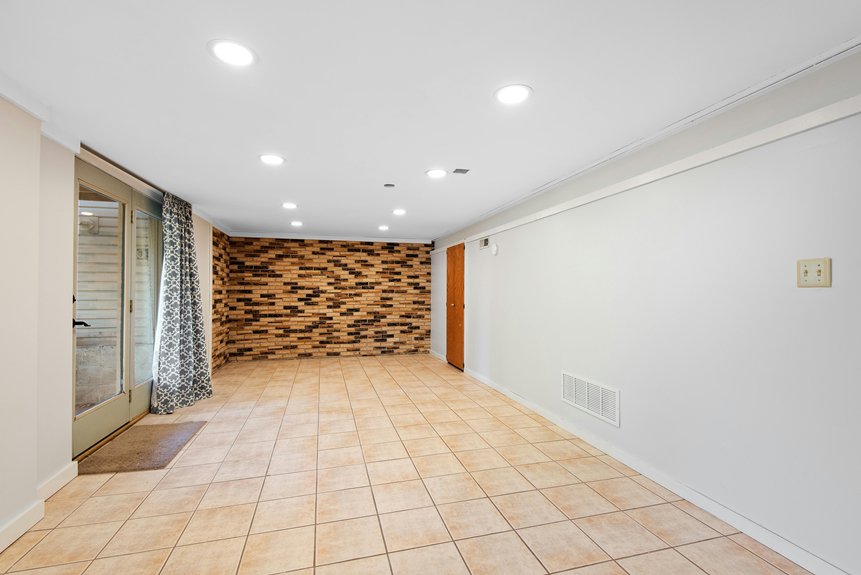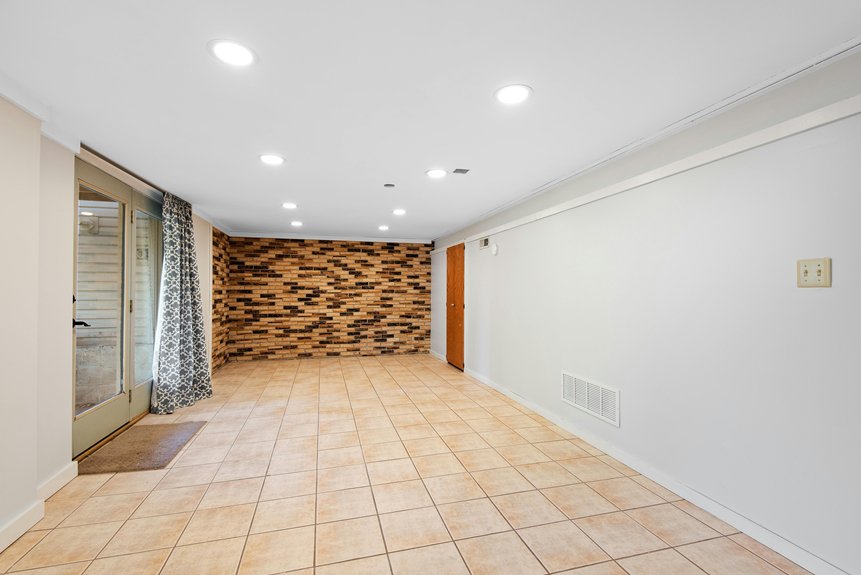If you’re a homeowner in Moorhead, MN, dealing with dampness in your basement, you’re not alone. Moisture problems can lead to mold growth and structural damage, so addressing them is vital. Start by evaluating your basement’s condition and identifying common moisture sources. With a few practical steps, you can effectively waterproof your space. Let’s explore some essential DIY techniques that will help protect your home and maintain its value.
Key Takeaways
- Inspect your basement for signs of moisture, such as damp spots and mold, to identify issues early.
- Ensure gutters and downspouts are clear and direct water away from your foundation to prevent pooling.
- Use high-quality sealants to fill hairline cracks and gap fillers for larger openings to prevent water ingress.
- Consider installing a sump pump and vapor barriers for effective moisture control in your basement.
- Regularly maintain drainage systems and inspect for new cracks to keep your basement dry.
Assessing Your Basement’s Current Condition
Before you plunge into any waterproofing projects, it’s essential to assess your basement’s current condition to identify specific issues.
Start by checking for signs of basement moisture, like damp spots or mold growth. Pay attention to any cracks in the walls or floor, as they can compromise your home’s structural integrity.
Use a moisture meter to get accurate readings, and don’t forget to inspect windows and doors for leaks. Addressing these concerns early can save you from costly repairs later.
Identifying Common Sources of Moisture
To effectively waterproof your basement, start by inspecting for foundation cracks, which can be a major source of moisture intrusion.
Next, evaluate your drainage solutions; poor drainage can lead to water pooling around your foundation.
Addressing these issues early can prevent significant damage and costly repairs down the line.
Foundation Cracks Inspection
While inspecting your foundation for cracks, it’s essential to understand that these openings can often signal underlying moisture issues.
Start your foundation inspection by looking for horizontal or vertical cracks, as their size and location can reveal the severity of the problem. A crack assessment should include checking for signs of water stains or mold nearby, which indicate moisture intrusion.
Remember to also examine joints where the foundation meets walls, as these areas are vulnerable. Addressing any identified cracks promptly can prevent further damage and maintain a dry basement, ultimately protecting your home’s structural integrity.
Poor Drainage Solutions
Identifying common sources of moisture is essential for tackling poor drainage issues that can lead to a damp basement. You should consider factors like your home’s drainage systems and how water diversion methods are implemented.
| Source of Moisture | Solution |
|---|---|
| Poorly graded yard | Adjust grading for slope |
| Clogged gutters | Regular cleaning |
| Downspouts too short | Extend downspouts |
| Cracked foundation | Seal cracks properly |
| Leaky window wells | Install proper drainage |
Improving Exterior Drainage
Improving exterior drainage is essential for preventing water from pooling around your foundation and ultimately seeping into your basement.
Start by inspecting your drainage systems; verify gutters and downspouts are clear and direct water away from your home. Consider installing a French drain or a sump pump if needed.
Additionally, focus on landscape grading—your yard should slope away from the foundation. Aim for a gradient of at least 2% over the first 10 feet. This simple adjustment can considerably reduce the risk of water accumulation.
Regular maintenance of these elements will help keep your basement dry and protected.
Sealing Cracks and Gaps
To keep water out of your basement, sealing cracks and gaps in your foundation is essential. Use high-quality crack sealants for hairline cracks and wider gaps. Gap fillers are perfect for larger openings around pipes and vents. Here’s a quick comparison to help you choose:
| Product Type | Best Use |
|---|---|
| Crack Sealants | Hairline cracks |
| Gap Fillers | Larger openings |
| Both | Prevent water ingress |
Inspect regularly and address any new cracks or gaps promptly. This proactive approach will help maintain a dry, safe basement for your home.
Installing a Sump Pump
Installing a sump pump can be a game-changer in keeping your basement dry, especially if you live in an area prone to flooding or heavy rainfall.
Start by choosing the right sump pump based on your basement size and potential water volume. During sump pump installation, dig a pit in your basement floor, guaranteeing it’s below the water table. Position the pump and connect it to a discharge pipe leading outside.
Don’t forget regular sump pump maintenance; check the pump monthly, clean the pit, and test the float switch to verify it’s functioning properly. This simple setup can save you from costly water damage.
Utilizing Vapor Barriers
After guaranteeing your sump pump is in place and functioning, you’ll want to tackle moisture from another angle: utilizing vapor barriers.
Proper vapor barrier installation is essential for effective moisture control in your basement. Here are three key steps to take into account:
- Select the Right Material: Choose polyethylene sheets or specialized vapor barrier products for durability.
- Cover Walls and Floors: Guarantee complete coverage, extending barriers up the walls to prevent moisture seepage.
- Seal the Edges: Use tape or adhesives to seal all edges and seams, creating a continuous moisture barrier.
These steps will help keep your basement dry and comfortable.
Maintaining Proper Ventilation
How can you guarantee that your basement stays dry and free of musty odors?
Maintaining proper ventilation is key. Ascertain consistent air circulation by using exhaust fans or opening windows when possible.
Investing in a dehumidifier can greatly aid in humidity control, keeping moisture levels in check.
Regularly check and clean vents and ducts to prevent blockages that hinder airflow.
You might also consider installing vents or air bricks if your basement lacks them.
Conclusion
By taking proactive steps to waterproof your basement, you can protect your home from moisture damage and mold growth. Regularly assess your basement’s condition and tackle issues like drainage and sealing cracks promptly. Installing a sump pump and vapor barriers will further safeguard against water intrusion. With these DIY techniques, you’ll maintain a dry, healthy basement that enhances your home’s value and livability in Moorhead, MN. Don’t wait—start your waterproofing project today!




